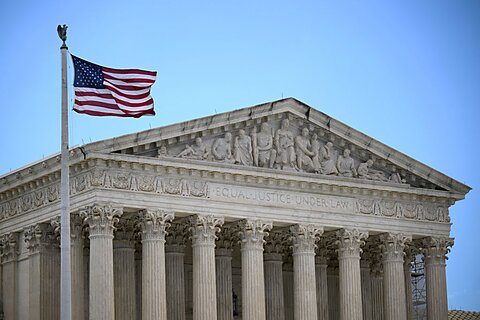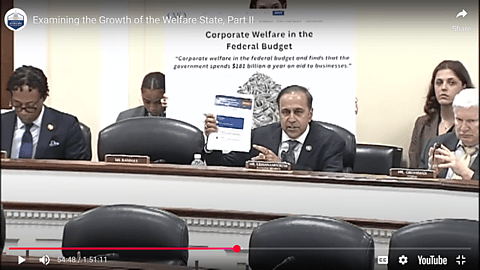
It’s no secret that administrative agencies have significantly overstepped their statutory authority in recent decades. The Supreme Court’s recent Loper Bright ruling—marking the official demise of Chevron deference—is a necessary course correction that offers hope for a return to the separation of powers under the US Constitution. Unfortunately, although the Loper Bright decision is a huge win for limited and constitutional government, it does not fully protect us from activist agencies.
To be clear, my reaction to Chevron’s end was “good riddance.” The legal doctrine dating back to 1984 never made sense. It not only offered judges an oversimplified way to wiggle out of difficult decisions but also biased their decisions in favor of the government. Judges would routinely hit the “Chevron button,” uphold the agency’s interpretation of the relevant statute, and call it a day. Overturning Chevron is, without a doubt, the correct decision.
But does Loper Bright prevent the most egregious administrative abuses? Upon hearing the news of Chevron’s death, my thoughts immediately turned to the Environmental Protection Agency’s (EPA’s) most recent overreach—its greenhouse gas (GHG) regulations on power plants. What does the end of Chevron mean for these rules?
The EPA’s most egregious administrative abuse—the so-called Clean Power Plan, which is now on its second iteration—is likely to continue because the agency’s modus operandi in recent years has little to do with crafting power plant rules that will survive judicial review. Instead, the goal of the EPA’s power plant rules appears to be to punish politically disfavored industries by mandating impossible standards and injecting radical regulatory uncertainty.
I know this is a serious accusation, so allow me to support it with some recent evidence and a touch of statutory interpretation.
Clean Power Plan 1.0
There is clear evidence in the public record that the EPA has become accustomed to getting the outcome it wants despite losing in court. Gina McCarthy, who served as EPA Administrator under President Obama, stated her views regarding the then-ongoing judicial review of the EPA’s Mercury and Air Toxics Standard (a rule that caused a significant number of coal-fired power plants to close). McCarthy said in 2015 that she was confident the Supreme Court would rule in the EPA’s favor, but an unfavorable ruling wouldn’t stop the agency:
“This is a rule that actually regulates toxic pollution emissions from primarily coal facilities, and we think we’re going to win because we did a great job on it.… But even if we don’t, it was three years ago. Most of them are already in compliance, investments have been made, and we’ll catch up.”
At that time, the EPA was just weeks away from finalizing its Clean Power Plan, the agency’s first attempt to limit GHG emissions from power plants. Administrator McCarthy’s sentiments aligned with President Obama’s statement following the failure of cap-and-trade legislation in 2010, when he said “there is more than one way to skin a cat,” meaning he would take executive action to address GHG emissions.
One way or another, with or without authority from Congress or supporting opinions from the courts, the EPA will get its way. Take, for example, the June 2022 decision in West Virginia v. EPA, in which the Supreme Court reviewed the merits of the Clean Power Plan and rejected it. The Supreme Court rebuked the EPA, cautioning the agency that it would need clear statutory authority to dictate the electricity mix under the Clean Air Act as part of its GHG mitigation efforts.
The Supreme Court’s opinion in West Virginia v. EPA was the clearest articulation of the Major Questions Doctrine to date. This legal doctrine came about to address “a particular and recurring problem: agencies asserting highly consequential power beyond what Congress could reasonably be understood to have granted.” [Opinion at 20] The EPA’s Clean Power Plan was the poster child for the recurring problem of agency overreach.
Clean Power Plan 2.0
In May 2023, the EPA proposed an even more aggressive GHG rule for power plants (and gave it a 39-word title, so I will use the shorthand “CPP 2.0”). This time, the EPA claimed it was merely selecting the “best system of emission reduction” that “has been adequately demonstrated” for GHG-emitting power plants, as section 111 of the Clean Air Act requires. And, of course, the EPA claimed its new CPP 2.0 would neither increase the cost nor reduce the reliability of electricity.
Despite hearing from many commenters (myself included, twice) that its proposal was technically, economically, and legally unworkable, the EPA nonetheless moved forward with a nationwide mandate for carbon capture and storage/sequestration (CCS) in the final rule it issued in May of this year. It mandated CCS not on the basis that it is adequately demonstrated—CCS is quite the opposite, even according to outspoken climate activists—but instead that it is sufficiently subsidized by the Inflation Reduction Act of 2022 and hence authorized by Congress.
Physics, economics, and political science tell us there’s no way to capture 90 percent or more of the carbon dioxide from every (or perhaps any) coal plant in America, as CPP 2.0 requires. The practical result of CPP 2.0 will be to close those facilities permanently. Congress has never given the EPA the authority to do that. The opposite is true—in the lead-up to the IRA’s passage, Congress considered and explicitly dropped the idea of a national clean energy standard.
Where Should We Go Now?
For CPP challengers, the best outcome is a stay (legal pause) of CPP 2.0 issued swiftly by either the DC Circuit Court of Appeals or the Supreme Court. Given the CPP’s procedural history, it’s hard to imagine such a stay not being issued (the Supreme Court issued a stay of CPP 1.0 in 2016 after the DC Circuit denied it). Then, the merits of CPP 2.0 will be heard by the DC Circuit and, if necessary, the Supreme Court. I cannot foresee a world in which CPP 2.0 survives judicial review. Still, as Administrator McCarthy said, the EPA could get its way whether its rules hold up in court or not.
Although overturning Chevron does not prevent the type of activist, swing-for-the-fences rules coming out of the EPA, there is a silver lining. Administrative rules built on flawed statutory interpretations (such as the EPA’s assertion that CCS fits the definition of “adequately demonstrated”) are now more likely to be overturned. This is a positive step because a high likelihood of reversal is one factor—along with other considerations like the prospect of irrevocable harm—that motivates courts to issue a stay.
Even with the Chevron victory, can we do better? One path forward is to require congressional approval of major rules before implementation. That is the concept behind legislative reforms such as the REINS Act. No legislative or judicial realignment is perfect, but the end of Chevron should be celebrated, and we should continue to look for ways to curtail executive overreach.



